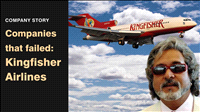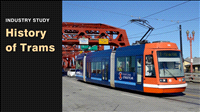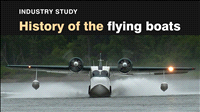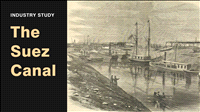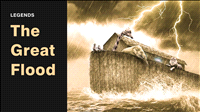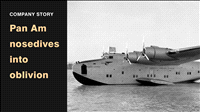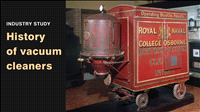Pan Am nosedives into oblivion | Company Story | Business History
By Kiron Kasbekar | 18 Nov 2022
There is so much happening in the field of aviation worldwide that even those of us who have lived for over seventy years tend to forget that there once was an airline called Pan Am.
And it wasn’t just one of those airlines. It was the world’s biggest and most innovative airline for over half a century. It was the first airline to fly all over the world, reaching six continents!
Then, after being buffeted by one global crisis after another, an American aviation policy that turned from being favorable to it to becoming almost hostile and biased against it, some of its own big disasters, and some very poor management, the airline shut down permanently in December 1991. That is, more than thirty years ago.
If those of us who were around when the airline was alive and flying tend to forget it was there, most of the viewers of this video were probably not born then, or were too young to be concerned with events in the airline industry.
Pan Am’s fall is perhaps typical of leading companies because they stumbling and falling have become too big to maneuver, too over-extended, and unable to take quick decisions to fashion and implement a turn around.
Too many companies in this situation tend to throw more money at the problem instead of taking timely action to reverse the decline.
Big companies also find their maneuverability stymied by hardened labor attitudes that make cost reduction near-impossible. Which can be disastrous in a labor-intensive industry like the airline industry.
Pan Am’s people did agree to concessions, including steep pay cuts. But by that time the decline had become irreversible. The airline was already under the control of a previously rival airline, which had other interests to take care of.
But we are getting ahead of ourselves. Let us begin at the beginning.
You might be surprised to know that the first commercial airline in the world was not an American one. The first airline was the German airship company DELAG, founded on 16 November 1909. But let’s discount it because it flew airships (see picture of the Bodensee) and not airplanes.
In that case, the four oldest non-airship airlines that still operate are the Netherlands' KLM (launched in 1919), Colombia's Avianca (in 1919), Australia's Qantas (in 1920) and the Czech Republic's Czech Airlines (in 1923).
Britain’s Imperial Airways, which was launched in 1924, was merged into the British Overseas Airways Corporation (BOAC) in 1939. Then, in 1974, BOAC merged with the British European Airways (BEA) to form British Airways.
Pan Am, as Pan American World Airways was commonly known, was founded in 1927 by two former US Army Air Corps majors as a scheduled airmail and passenger service between Key West in Florida and Havana in Cuba. The airline thrived for over five decades until it hit an air pocket with the oil crisis of 1973. (founded as Pan American Airways?)
There are many books written about Pan Am, and I would highly recommend this one. It’s written by Robert L Gandt, and is called ‘Skygods: the fall of Pan Am’
Why Skygods? Well, the founders had built a great airline, which dominated the skies, so they were called gods of the skies – skygods. Later top bosses also became worthy of this description. They were powerful, and their word was always final.
Sometimes tactics that have succeeded in one situation can become disasters when applied in another situation. Trippe had made a very smart decision in his early years to get ___ to add one more passenger seat in the plane. That had immediately brought in profits.
The Boeing 314 was also considered one of the best flying boats that were flown until then. It was built to Pan Am specifications. Pan Am used these (CHECK) to fly inter-continental trips.
He tried to replicate that by getting Boeing to accommodate more passengers in their planes, so he placed orders for wide-bodied 707s, and then for 747 Jumbos with double that seating capacity. Usually this means economies of scale, when the capital cost does not rise in proportion to the capacity (in this case, seats).
Right? Wrong.
Why? It depends on the overall business environment. And it depends on the industry.
Ordering large planes made sense at a time when business was booming. But Pan Am found itself in one global crisis situation after another, which caused the market to shrink, leaving Pan Am with large unutilized seating capacities on its flights.
Pan Am had two other problems. Its focus on international flights meant it dealt with longer distances, so it was carrying empty seats over longer distances, and losing more money than if it had short routes to manage.
This is a problem typical of the airline industry. If you produce more cars in a month, you can hold the surplus in inventory, curtail production, and sell the inventory the next month. With airlines, an empty seat is a revenue forgone forever. You cannot store that empty seat and sell it another day.
In this sense, an airline flight is a perishable product. Other examples of perishables products in the services business are hotel rooms and theater seats.






